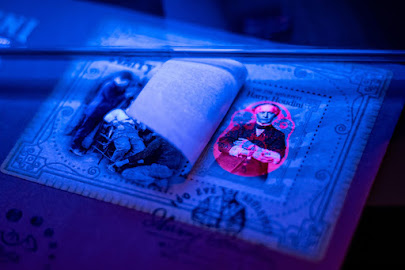I'm going to wrap up 2024 with a speculative journey. I often think about time travel. Well, more specifically, I think about time traveling to see Houdini. I know I'm not
alone in this. So if time travel were possible, and, say, you could select 3 specific days in the past in which to see Houdini, what days would those be? Here are the 3 days I would program into my flux capacitor:
Saturday, May 14, 1898
On this day, the
Welsh Bros. Circus was playing in Harrisburg, Pennsylvania. The young Harry and Bess Houdini were traveling with the circus performing
Metamorphosis in the circus concert tent, where Bess would also do her
seriocomic songs. It's also possible I could find Harry doing his King of Cards act in the sideshow. While all this would be enough, this day marked Houdini's debut as a "clown on bars" in the Big Top show. "Went big and funny," he wrote in his
diary. So, yeah, a chance to see so many aspects of the young Houdini and Bess and experience the entire Welsh Bros. show... What a day! Also, if the rules of time travel allow, it would be easy to approach and talk to him.
For my second date, it's very hard to not select March 17, 1904, as that was the day of the famed
Mirror Handcuff Challenge in London. Very hard! But the Mirror Challenge was just one performance, and I want to maximize my Houdini time. Besides, I know
Joe Notaro will choose the Mirror Challenge, so I can learn all about it from him. Instead, I'm going to...
Saturday, March 2, 1918
This time, I'm landing in New York City to see Houdini
vanish his elephant and escape from an underwater packing case at the Hippodrome. In fact, I could see it twice as the Hippodrome had a matinee (at 2:15) and an evening show (at 8:15). After the evening show, I could zip over to Martinka's magic shop and, using a 1918 S.A.M. card borrowed from one of my collector friends, I could attend the 174th regular meeting of the S.A.M. which Houdini presided over as President. But there's more! This was the week Houdini was giving
World War I soldiers lessons on how to escape from German handcuffs. So, disguised as a soldier, I could get a lesson in escapes from the Handcuff King himself! Although, a 60-year-old private might seem a bit suspicious. He might think I'm an imitator come to steal his secrets! Maybe I need to rethink this one.
My last choice
has to be a performance of the
3 Shows in One. But which one? While it is tempting to see Houdini's final show in Detroit, I think it would be too upsetting. So I'll leave that to others. Instead, I'm going to...
Thursday, September 30, 1926
This was when Houdini was playing his
3 Shows in One in Worcester, Massachusetts. This is also the day of the
Summerfield's Department store test, in which he was sealed in a glass casket for an hour propped up on view. Unlike his other outdoor stunts, which were over relatively quickly, this is one I could savor. I'd get to stand and look at the 52-year-old Houdini for an hour! Heck, maybe I could even strike up a conversation with
Jim Collins. Maybe get a backstage pass to the show that night! And speaking of that show, Houdini was doing the onstage
Buried Alive in Worcester at this time. So I can see exactly how he presented this still largely mysterious escape. Yes, this means I would not see the Water Torture Cell, but I want to learn during each jump. I would also get to see all the new and improved magic for the 1926-27 season, including
Slicing a Girl. And how poetic to see Houdini at age 52 doing his King of Cards routine, just as I had seen him do it three days and 28 years earlier.
How about you? What would your three days with Houdini be? Let us know in the comments below. I've also launched a
POLL on my Patreon.
Thank you for your patronage and support this year. It was a big year for
centennials and celebrations, and I expect more of the same in 2025. Happy holidays. I'll see you all in the future!
 |
| The Houdinis 1924 Christmas Card. |
2024 in Review:
Most Viewed New Post of 2024

























%20copy.jpg)





























